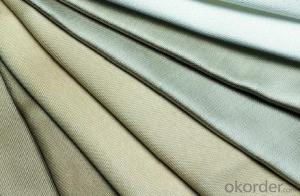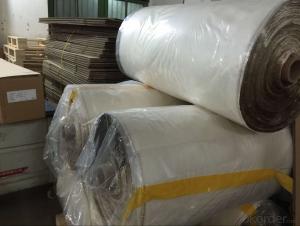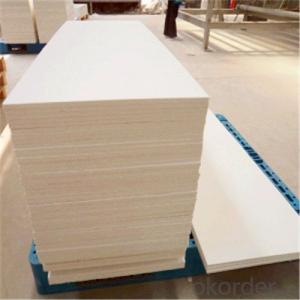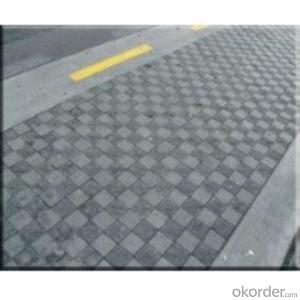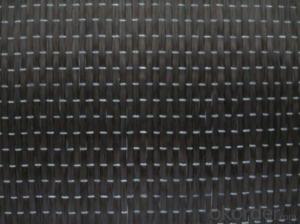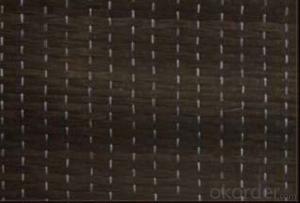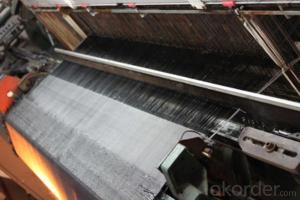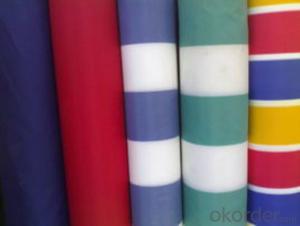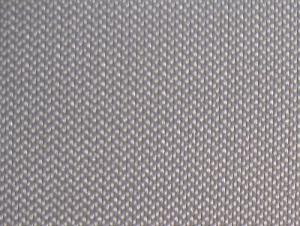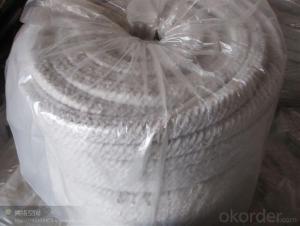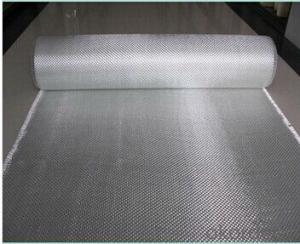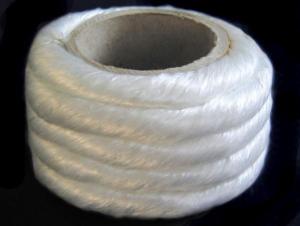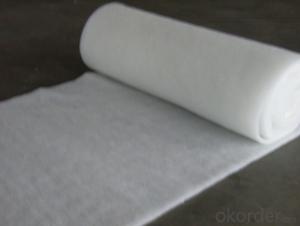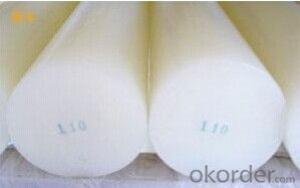36oz Silica Fiberglass Cloth Resisting 1000C for Heat Resistant
- Loading Port:
- China main port
- Payment Terms:
- TT OR LC
- Min Order Qty:
- 1000 m
- Supply Capability:
- 100000 m/month
OKorder Service Pledge
OKorder Financial Service
You Might Also Like
Product Description
Silica fiberglass is inorganic fiber that contents more than 96% of SiO2, it's resistant to high temperature, soft point 1700°C, long term service temperature 900 °C, it can work 10 minites at 1450 °C and keeps good state at 1600 °C for 15 seconds. For it's properties of chemical stability, high temperature resistance and ablation resistance, it widely used in aviationand aerospace, metallurgy, chemical, building material and fire fighting industry, etc.
Our factory is the only one that specialized manufacture silica fiberglass in China and has the production line of the whole process from marble making, fiber forming, weaving, and finish. The strength of silica fiberglass made from Na2O-B2O3-SiO2 system glass is 3-5 times higher than that from E glass. The products sold to more than 20 provinces, cities, autonomous regions and exported to foreign countries.
Silica fiberglass products are available in forms of needled mat, fabric, scrim, staple yarn, chopped strand and cord, etc.
Product Properties
1> SiO2>=96%
2> soft point nearly 1700°C, long-time working at 900°C
3> low thermal conductivity
4> good chemical stability
5> good electrical insulation
6> low thermal shrinkage
7> Non-asbestos product without pollution
8> good process performance
Product Uses
High temperature resistant, insulation and sealing material
High temperature ablation resistant material
Fireproof material (for fireproof protective clothe, fireproof curtain, fire blanket)
Dust collecting in media of high temperature gas and filtration in media of high temperature liquid
Filter for molten metal
Distinguisher, insulation material, filtration of automobile and motorcycle
Protective material for welding
Electricity insulation material
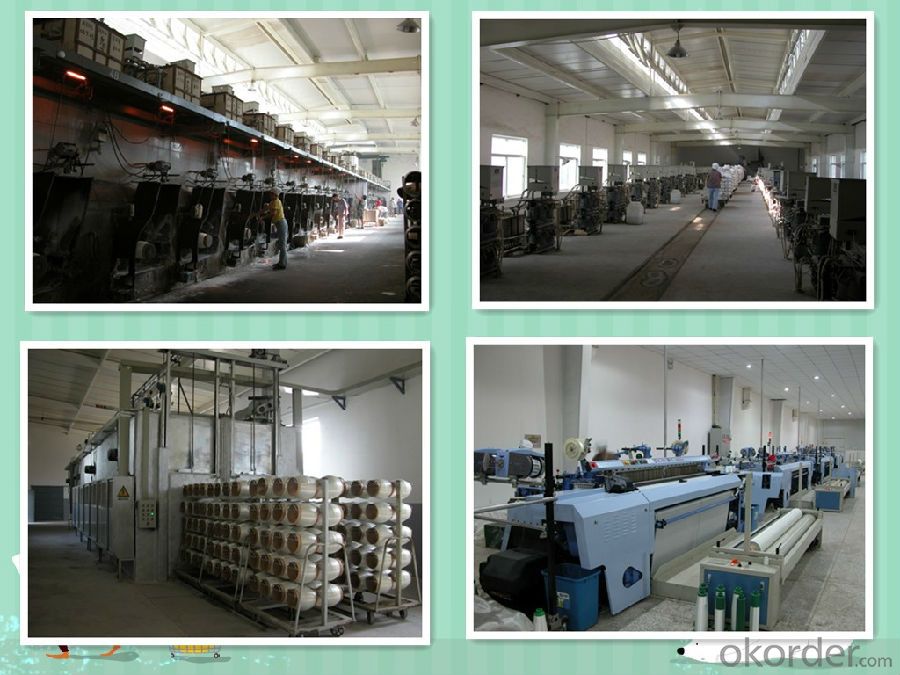

- Q:Can glass fiber textiles be used for protective clothing?
- Yes, glass fiber textiles can be used for protective clothing. Glass fiber textiles are known for their excellent resistance to heat, flame, and chemicals, making them suitable for various applications in protective clothing. They are often used in industries where workers are exposed to high temperatures, such as firefighting, metalworking, and welding. Glass fiber textiles can provide insulation and protection against heat and flame, reducing the risk of burns and injuries. Additionally, their resistance to chemicals makes them suitable for use in environments where workers are exposed to hazardous substances. However, it is important to note that glass fiber textiles can be rigid and uncomfortable to wear, so appropriate design considerations should be taken to ensure comfort and flexibility for the wearer.
- Q:Are glass fiber textiles resistant to chemical degradation?
- Yes, glass fiber textiles are generally resistant to chemical degradation.
- Q:Can glass fiber textiles be used for medical applications?
- Glass fiber textiles have the ability to be utilized in medical applications. These textiles are created by weaving together fine strands of glass fibers to produce a fabric. There are several qualities of these textiles that make them appropriate for medical use. Firstly, glass fiber textiles are biocompatible, which means they are unlikely to cause any negative reactions when they come into contact with the human body. This characteristic is crucial for medical applications as it guarantees that the textile will not cause any harm or discomfort to the patient. Secondly, glass fiber textiles possess resistance to chemicals and can endure processes of sterilization, such as autoclaving. This makes them ideal for use in medical environments where maintaining sterility is of utmost importance, such as surgical gowns, drapes, or wound dressings. Moreover, glass fiber textiles exhibit exceptional strength and durability, making them appropriate for use in medical devices and implants. For instance, they can be utilized to reinforce prosthetic limbs, create orthopedic braces, or serve as a component in surgical sutures. Additionally, glass fiber textiles possess thermal insulation properties, which can be advantageous in medical applications. They can be employed as insulation in medical devices that are sensitive to temperature or in the construction of incubators and thermal blankets for premature infants. In conclusion, glass fiber textiles can be employed in various medical applications due to their biocompatibility, resistance to chemicals, strength, durability, and thermal insulation properties. Their adaptability and suitability for medical use make them a viable choice for enhancing healthcare and improving patient outcomes.
- Q:Is glass fiber textile fire-resistant?
- Glass fiber textile, indeed, possesses fire-resistant properties. It is crafted from interlaced or non-interlaced glass fibers, exhibiting remarkable resistance against heat and flames. These textiles are not prone to easy ignition and can endure high temperatures without succumbing to melting or emitting harmful fumes. Consequently, glass fiber textiles find widespread usage in various applications where fire safety is of utmost importance, such as fabricating fire-resistant garments, drapes, furniture covers, and insulation materials.
- Q:Are glass fiber textiles resistant to fading?
- Yes, glass fiber textiles are resistant to fading. Glass fibers are made of inorganic materials, such as silica, which are highly resistant to UV radiation and sunlight exposure. Unlike organic fibers like cotton or polyester, glass fibers do not undergo chemical reactions that cause fading or discoloration. This makes glass fiber textiles highly durable and long-lasting, maintaining their color and appearance even after prolonged exposure to sunlight. Additionally, glass fibers are also resistant to other environmental factors like moisture, heat, and chemicals, further adding to their fade-resistant properties.
- Q:How do glass fiber textiles affect the elasticity or stretchability of fabrics?
- Glass fiber textiles, also known as fiberglass, have a minimal impact on the elasticity or stretchability of fabrics. While glass fibers themselves possess high tensile strength, when incorporated into fabrics, they do not significantly alter the stretchability. Fabrics with glass fiber textiles may exhibit slightly reduced elasticity compared to pure fabric, but the impact is generally negligible.
- Q:Can glass fiber textile be quilted?
- Yes, glass fiber textile can be quilted. Quilting is a technique of stitching two or more layers of fabric together with a layer of padding in between to create a decorative and functional textile. While traditionally quilting is done with natural fibers such as cotton or wool, it is also possible to quilt synthetic textiles like glass fiber. Glass fiber, also known as fiberglass, is a durable and lightweight material that can be used for various applications, including insulation, reinforcement, and protective clothing. When quilted, glass fiber textile can provide additional insulation and strength to the quilted fabric, making it suitable for applications that require heat resistance or structural reinforcement. The quilting process for glass fiber textile would involve layering the glass fiber fabric with a batting material and a backing fabric, and then stitching through all layers to secure them together. However, it is worth noting that working with glass fiber textile may require special safety precautions due to its potential for causing skin irritation or respiratory issues, so it is important to follow recommended safety guidelines when handling and quilting this material.
- Q:Are glass fiber textiles resistant to bacterial growth?
- Yes, glass fiber textiles are generally resistant to bacterial growth. Glass fibers are made of inorganic materials, which do not provide a suitable environment for bacteria to thrive. Additionally, the smooth and non-porous surface of glass fibers makes it difficult for bacteria to adhere and multiply. This inherent resistance to bacterial growth makes glass fiber textiles a popular choice in industries where hygiene and cleanliness are crucial, such as healthcare, food processing, and aerospace. However, it is important to note that while glass fiber textiles are resistant to bacterial growth, they may still collect dust or other organic matter which can potentially support bacterial growth if not properly cleaned and maintained.
- Q:How do glass fiber textiles resist static electricity?
- Glass fiber textiles resist static electricity due to their non-conductive nature. Unlike materials such as cotton or wool, which can generate and hold static charges, glass fibers do not readily accumulate an electric charge. This is because glass is made primarily of silica, which is a poor conductor of electricity. When an object rubs against glass fiber textiles, the friction created can generate static electricity. However, the non-conductive nature of the glass fibers prevents the electric charge from accumulating on the surface of the textile. Instead, the charge is quickly dispersed or grounded, preventing any buildup of static electricity. Additionally, glass fiber textiles often have low moisture absorption properties, further reducing their susceptibility to static electricity. Moisture can help conduct electrical charges, so the lack of moisture absorption in glass fibers limits the ability for static charges to form and persist. Overall, the non-conductive nature and low moisture absorption properties of glass fiber textiles make them highly resistant to static electricity. This makes them a suitable choice for applications where static charge control is important, such as in the manufacturing of electronics or in environments where flammable materials are present.
- Q:How do glass fiber textiles affect the moisture management of fabrics?
- Glass fiber textiles can enhance the moisture management of fabrics by effectively wicking away moisture from the body and promoting quick evaporation. The hydrophilic properties of glass fibers allow them to efficiently absorb and transport moisture away from the skin, keeping the wearer dry and comfortable. Additionally, the breathable nature of these textiles ensures that moisture is readily released into the surrounding environment, preventing the buildup of sweat and providing a more breathable and moisture-regulating fabric.
1. Manufacturer Overview |
|
|---|---|
| Location | |
| Year Established | |
| Annual Output Value | |
| Main Markets | |
| Company Certifications | |
2. Manufacturer Certificates |
|
|---|---|
| a) Certification Name | |
| Range | |
| Reference | |
| Validity Period | |
3. Manufacturer Capability |
|
|---|---|
| a)Trade Capacity | |
| Nearest Port | |
| Export Percentage | |
| No.of Employees in Trade Department | |
| Language Spoken: | |
| b)Factory Information | |
| Factory Size: | |
| No. of Production Lines | |
| Contract Manufacturing | |
| Product Price Range | |
Send your message to us
36oz Silica Fiberglass Cloth Resisting 1000C for Heat Resistant
- Loading Port:
- China main port
- Payment Terms:
- TT OR LC
- Min Order Qty:
- 1000 m
- Supply Capability:
- 100000 m/month
OKorder Service Pledge
OKorder Financial Service
Similar products
New products
Hot products
Hot Searches
